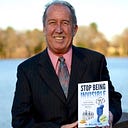How do open-ended questions improve interpersonal communication?
In the past couple of articles, I have mentioned how open-ended questions demonstrate listening and encourage participation in the classroom, but I wanted to take a moment to better explain the difference between open-ended and closed questions, outline the benefits of using open-ended questions, and provide prompts to help you better implement these types of questions in future conversations.
During the communication process, questions are asked and answered in order to:
- Help clarify.
- Extract more information.
- Draw someone into a conversation.
- Sustain a conversation.
The use of questioning skills is an important area of verbal communication. By asking questions, you gain answers, understanding, and potentially acceptance for the message sender.
Open-Ended vs. Closed Questions
There are two types of questions that can be asked and answered: open-ended and closed. Open-ended questions are questions that allow for the continuation of the conversation and are used to solicit additional information. The use of open-ended questions has an inviting quality that encourages the speaker to provide a more authentic, in-depth, and lengthier response; and, when used in conversation, open-ended questions allow you to find out more about the person with whom you are talking.
On the other hand, a question that can be answered with a “yes,” “no,” or short response is a closed question. Closed questions stop the conversation and provide only the answer to your question without any further detail. Asking closed questions will limit the listener’s answer because they will provide no more information than is needed or required — the response you will receive to a closed question will be just what you asked.
Once, while I was waiting to get my haircut, this was the conversational exchange between a stylist and another customer.
Stylist: “Are you down here for vacation?”
Customer: “Yes.”
Stylist: “Have you visited the boardwalk yet?”
Customer: “Not yet.”
Stylist: “What are you and your family planning to do tonight?”
Customer: “Not sure.”
Stylist: “Are you excited about going back to school and seeing your friends?”
Customer: “Sort of.”
The next fifteen minutes of the young man’s haircut was in total silence. As you can gather from this conversational exchange, when closed questions were used, there was little conversational interaction between the stylist and the customer. The customer was quickly annoyed with the stylist’s questions, and the stylist was not asking open-ended questions to engage the customer.
Continuing the Conversation
A closed question limits the possibility for a sense of connection to develop between you and the person with whom you are speaking. When asked a closed question, people tend to refrain from elaborating on their response and instead answer with a one-word or short answer response.
But, for successful conversations to occur, it is important that the questions that are asked continue rather than end the conversation.
When asking open-ended questions, you are “bouncing the ball back” to the speaker. “Bouncing the ball back” to the speaker not only leads to calcification of the topic of conversation but also allows the listener to extract more specific information. When a person has the opportunity to think, they are more comfortable, and people who are more relaxed tend to be more forthcoming with their ideas, concerns, and feelings.
Asking open-ended questions encourages others’ thoughts and feelings to flow, allowing you to support this flow while gaining insight. When the speaker is asked open-ended questions, they are being provided the opportunity to talk in more detail about their interests and needs, allowing for further discussion and elaboration about the topic or for follow-up questions to be asked.
Putting It Into Practice
News reporters are very good at asking open-ended questions because their job is to get the other person to talk about what they saw, think, feel, etc. The TV viewer is not interested in what the news reporter feels about what is happening; instead, the TV audience wants to hear from the people who were there. The interviewer leads the other person in the conversation. If you study these interviews, you will notice that most open-ended questions begin with: who, what, when, where, or how.
Examples:
- Who did you see the movie with?
- What was your favorite part of the movie?
- When did you see the movie?
- Where did you go to see the movie?
- “How was the movie?”
Why Not “Why?”
When asking open-ended questions, avoid “why” questions. “Why” questions cause people to make up a rational reason, even if they do not have one, to provide a response. It may also cause a person to feel defensive, as though they are expected to defend their response.
Open-Ended Question Starters
Here are a few open-ended question prompts to help get you started. If these are helpful to you (or if you would like more samples), please let me know in the comment section below!
- “Tell me more about…?”
- “How was your…?”
- “Where are you…?”
- “When did you want to…?”
- “Who else…?”
- “When does…?”
- “What makes that fun….?”
- “How do you like to celebrate…?”
- “What do you usually do during…?”
Dr. William Lane is a special educational consultant, academic coach, international speaker, and best-selling author whose passion has always been improving the lives of those with special needs. A subject expert in verbal and non-verbal communication skills, Dr. Lane works with individuals who have been diagnosed with Autism Spectrum Disorder (ASD) to help develop effective interpersonal communication skills in order to increase success in and quality of life.
